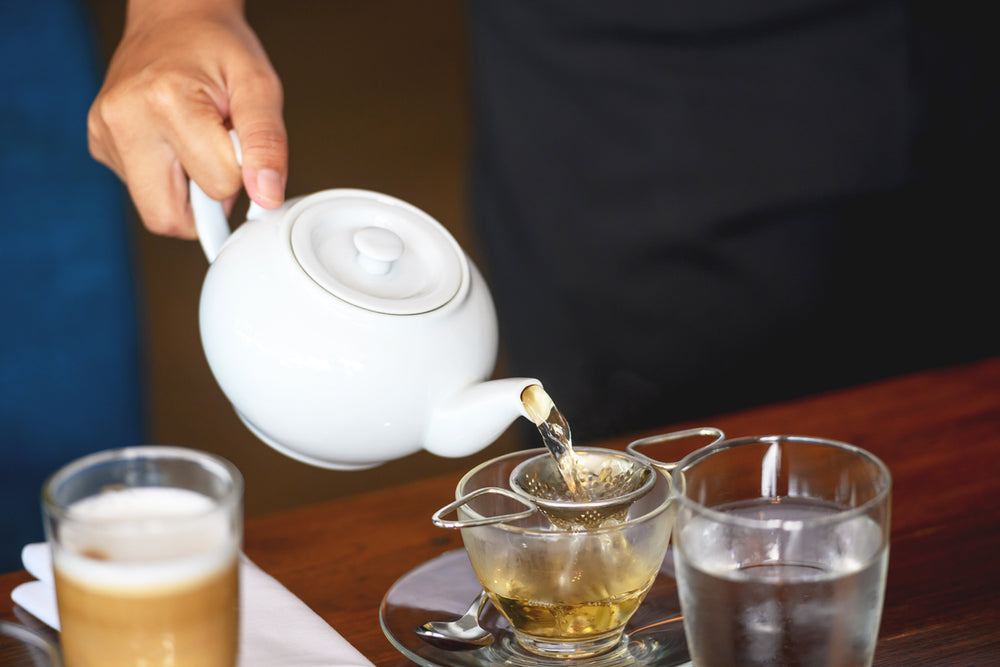Tea has a rich history in Britain that combines comfort and tradition. It is nothing less than a significant elixir that has transcended for centuries. This much-loved beverage is embraced by the British for its calming warmth, social connection and cultural identity. It is a significant part of their daily lives.
The word ‘cuppa’ in Britain is a colloquial term for a cup of tea. Friends and family often use this term in their friendly or informal conversations to suggest someone to have a cup of tea with them.
The Britons' love for tea can be seen in its meticulous preparation. Steeped in tradition and nuance, tea not only delivers a satisfying beverage but also reflects a deeper connection to etiquette, relaxation and camaraderie.
How Tea Became a Part of the British Lives!

Tea’s significance is woven into the history of Britain. Since its introduction in the 17th century, tea has primarily been a luxury enjoyed by the aristocracy. Over time, its appeal grew among all classes of people.
It soon reached a pinnacle of fondness with the well-known afternoon tea custom that is credited to Anna, the Duchess of Bedford, in the early 19th century. This custom served as a social bridge between lunch and a late dinner, offering a setting for interaction, company, and, of course, tea.
The Essentials of Brewing: A Delicate Dance of Temperature and Timing

It takes skill to make an ideal cup of British tea. One must begin by heating fresh, cold water and bringing it to a boil. Rinse the teapot or teacup with hot water to preheat them. Allow the water to come to a rumbling boil before adding any black tea, such as Earl Grey or English Breakfast.
A slightly cooler temperature is required for green tea, white tea, or herbal infusions in order to avoid bitterness. The flavours that emerge are influenced by the water temperature and the tea-to-water ratio.
Next, place the loose tea leaves or tea bags into the teapot or teacup. As a general rule, one teaspoon of loose tea or a tea bag per cup of water is considered to be the best ratio.
Pour the hot water over the tea and let it to steep. The steeping time varies based on the type of tea—black teas usually require 3-5 minutes, while green teas and herbal infusions may need only 1-3 minutes. The steeping time impacts the strength and aroma of the tea.
The Art of Serving: Accompaniments and Etiquette

A well-prepared pot of tea deserves an equally refined presentation.
Traditionally, in Britain, milk is served with tea. Tea with milk has been a tradition since the 18th century when pouring hot tea into delicate porcelain cups would cause the cups to crack. To prevent this, milk was put in the cup first before pouring the tea concoction. Since then, this has become synonymous with British tea culture.
Even today, tea connoisseurs debate the fact whether to pour the milk before the tea or after. Several argue that adding the milk after the tea makes the tea stronger and gives it a lovely colour. This, however, is limited to individual's taste and preference.
Accompaniments with tea, elevate the experience. Traditional additions to afternoon tea include scones with clotted cream and jam, finger sandwiches and delicate pastries. These sweets not only go well with tea's flavours, but they also make a delicious spread.
The British are quite particular about their etiquette and tea is no exception. They believe that following etiquette enhances the experience of drinking tea.
For instance, when stirring tea, it is proper to do so with a gentle back-and-forth motion rather than a circular one, as the latter may be perceived as impolite.
Additionally, holding the teacup by the handle with the pinkie finger extended is a misconception; the proper way is to hold the handle with three fingers while allowing the pinkie to rest naturally.
The Afternoon Tea Ritual: A Social Affair

British tea culture is alluring! The tradition of taking afternoon tea embodies a sense of cosiness, sophistication and friendship. The practice encourages connections and conversations, whether it is done in a luxurious hotel, a backyard garden, a cosy tearoom or the convenience of one's own home.
The custom of having afternoon tea encourages taking your time and appreciating the present. Delicate teacups, saucers, tier stands filled with sweets and occasionally even fine china are frequently used to adorn the tea table. This visual extravaganza creates the environment for a multisensory experience.
In addition to being aesthetically pleasing, afternoon tea gives people the chance to spend time alone or with loved ones. It offers a chance to take a break from the daily grind, have meaningful interactions and forge enduring memories. The practice has effortlessly changed to fit contemporary lifestyles while keeping its core characteristics, making it a cherished practise.
Modern Adaptations
While fundamental elements of British tea culture remain steadfast, modernity has indeed brought about adaptations. Tea bags have gained popularity as a convenient option for quick fixes and a variety of tea blends and infusions have broadened the flavour palette.
The emergence of speciality tea shops and artisanal blends has opened up new options, enabling tea lovers to experiment with a wide range of flavours while staying rooted in tradition.
The craft of making and serving tea today transcends national boundaries. People all over the world appreciate British tea culture and have adopted its customs and developed their own variations. This tradition's ubiquity reveals its enduring allure and adaptability.
Conclusion

The ideal cup of tea represents more than just a beverage; it also represents history, culture and an appeal to savour little things in life. The British method of making and serving tea is a testament to the strength of custom, manners and community.
Inviting us to embrace life's simple pleasures, one cup at a time, the British way of tea offers a sanctuary of refinement and warmth.


 Easter 2026
Easter 2026
 Frozen Food
Frozen Food
 Baking
Baking
 Beans, Peas, Soups & Tins
Beans, Peas, Soups & Tins
 Biscuits, Crackers & Cookies
Biscuits, Crackers & Cookies
 Candy / Sweets
Candy / Sweets
 Crisps & Snacks
Crisps & Snacks
 Chemist / Pharmacy
Chemist / Pharmacy
 Desserts
Desserts
 Gravy, Stock & Paste
Gravy, Stock & Paste
 Haggis
Haggis
 Indian Sauces, Paste and Pickle
Indian Sauces, Paste and Pickle
 Jams & Preserves
Jams & Preserves
 Poppy Appeal
Poppy Appeal
 Pot Noodles & Super Noodles
Pot Noodles & Super Noodles
 Scone Mix
Scone Mix
 Gluten-Free / Free From
Gluten-Free / Free From
 Tea Accessories
Tea Accessories
 Teapot & Tea sets
Teapot & Tea sets
 Tea For One
Tea For One
 Sugar & Creamer
Sugar & Creamer
 Tableware
Tableware
 Serveware
Serveware
 Plates & Trays
Plates & Trays
 Bowls
Bowls
 Cups & Saucers
Cups & Saucers
 Mugs
Mugs
 Silverware
Silverware
 Dinnerware - Accessories
Dinnerware - Accessories
 Dinnerware - For Pets
Dinnerware - For Pets
 Victoria Eggs - Hand-Drawn UK Homeware
Victoria Eggs - Hand-Drawn UK Homeware
 Jewelry & Accessories
Jewelry & Accessories
 Sale
Sale
 Christmas Gifts
Christmas Gifts

